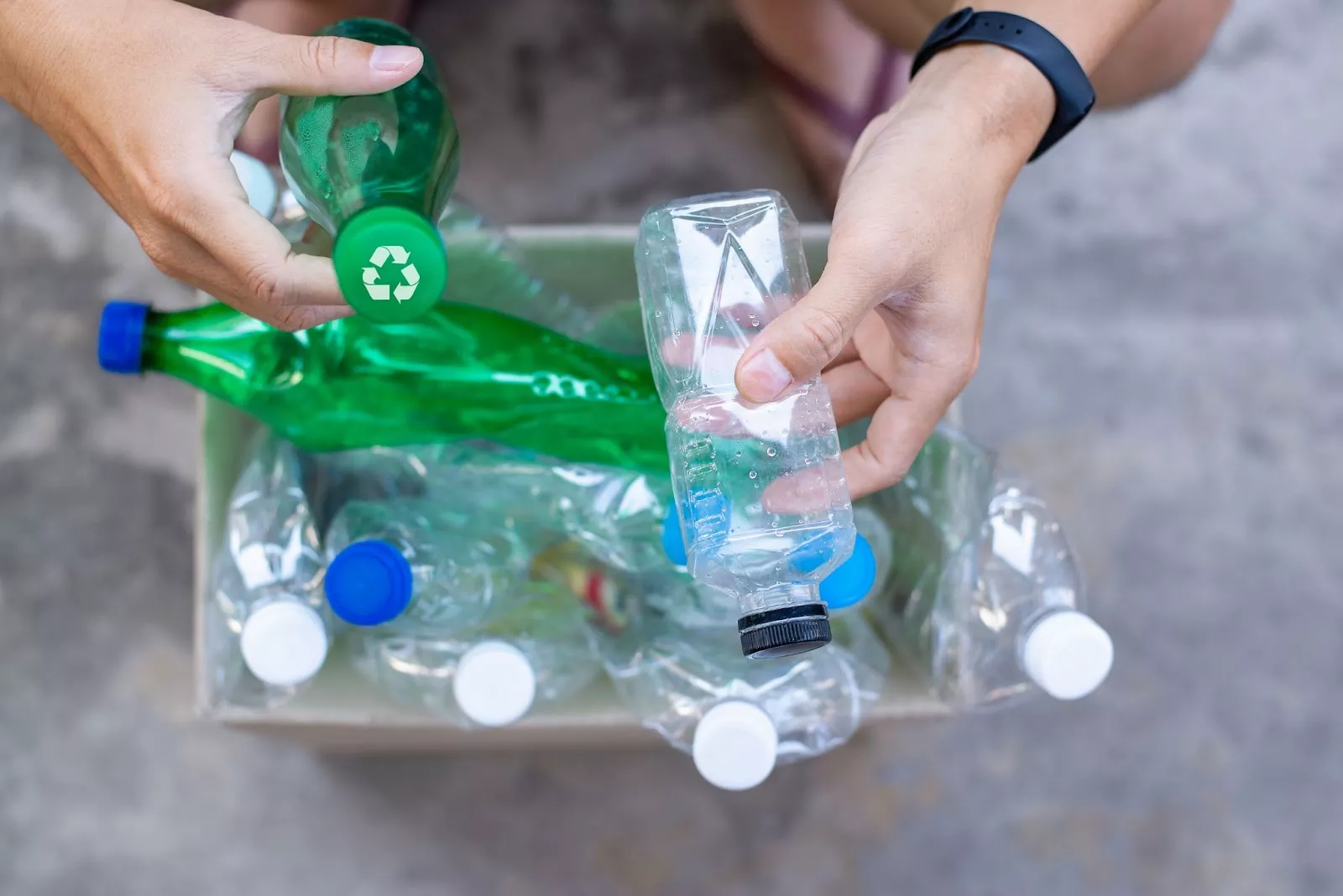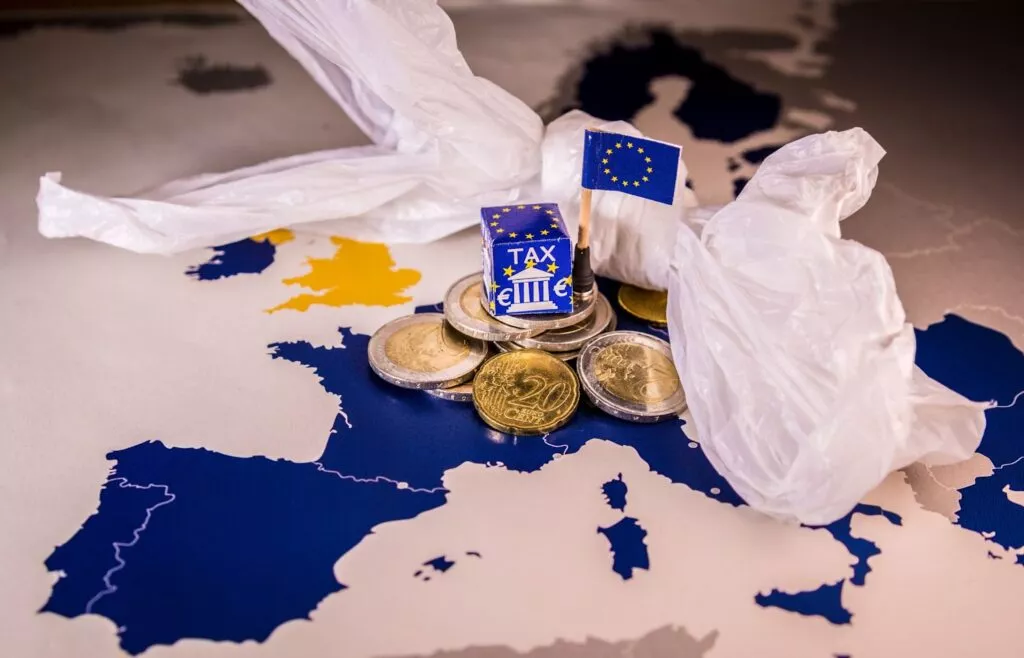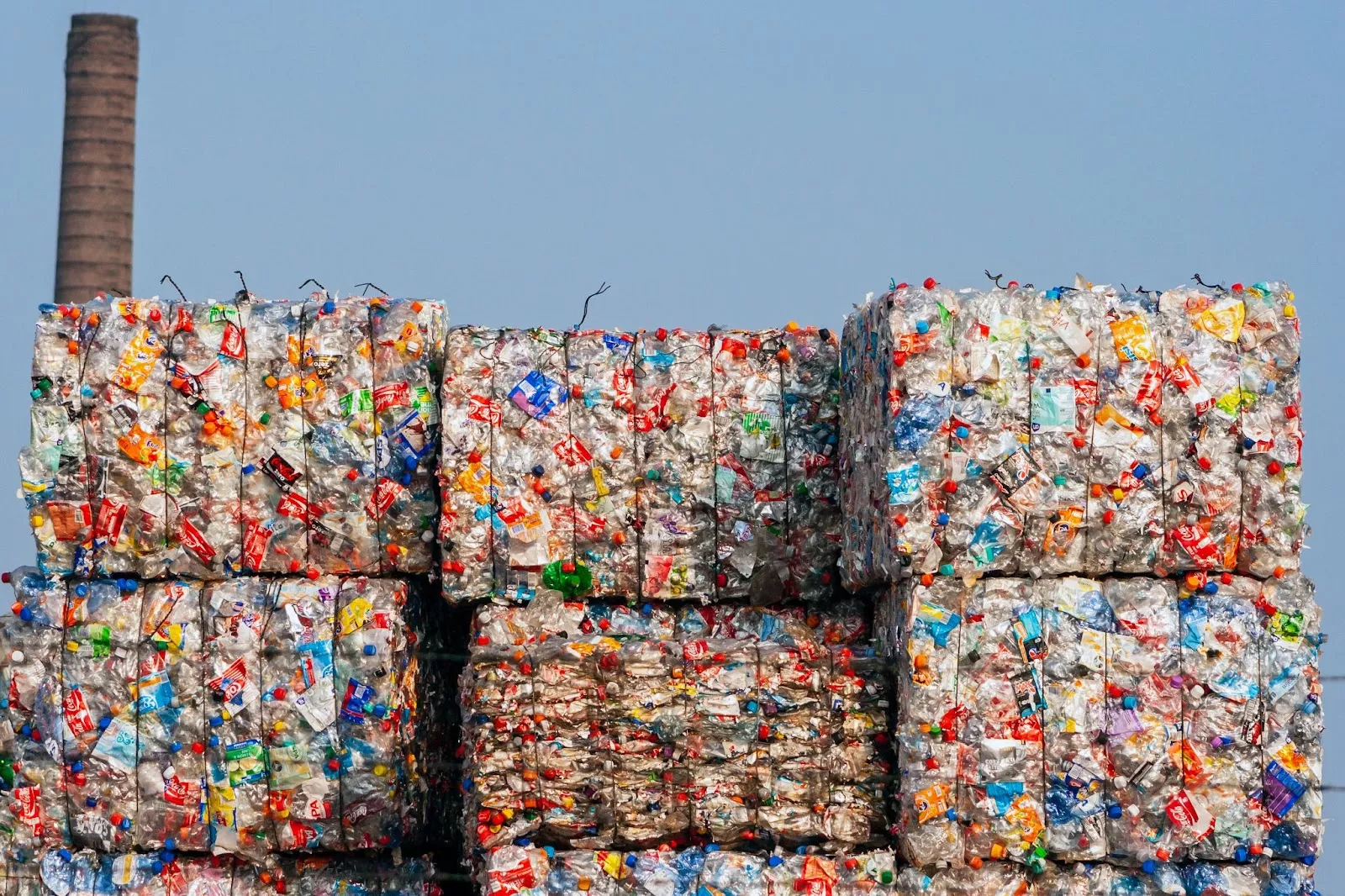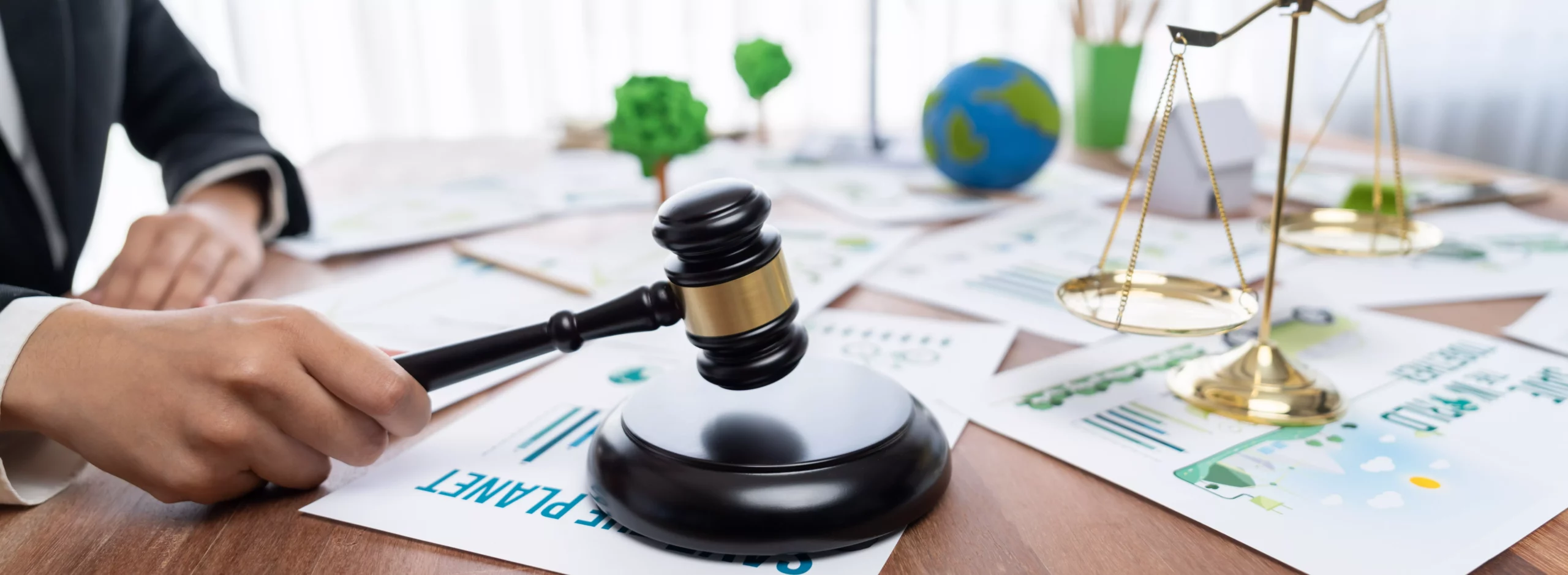EPR Legislation and Packaging: Laws in the US vs. EU
A producer’s job doesn’t end after a purchase. Extended Producer Responsibility (EPR) legislation mandates that producers manage the end-of-life disposal of their products and packaging. In essence, producers must consider the environmental impact of their products once consumers have disposed of them.
It’s critical for addressing the growing global packaging waste problem.
Between 2000 and 2019, packaging contributed to roughly 40% of global plastic waste. Surprisingly, non-biodegradable packaging grew by 15% during the COVID-19 pandemic. These alarming statistics highlight the necessity for effective waste management strategies.
By 2050, worldwide waste generation is also predicted to reach around 70%, making it crucial for businesses and communities to prioritize sustainability and implement responsible waste management practices to mitigate environmental impact.
EPR legislation incentivizes producers to use more sustainable materials and develop methods to dispose of and collect their packaging waste easily. However, specific EPR regulations differ among regions.
This article discusses the differences between EPR legislation in the United States and the European Union. It delves into how each region approaches the different types of packaging, the responsibilities of producers, and the recycling requirements producers must meet.
Jump To Section
- Extended Producer Responsibility (EPR) Legislation: An Overview
- EPR Legislation in the United States
- EPR Legislation in the European Union (EU)
- Key Differences of EPR Laws in the US and EU
- Comply with Local EPR Laws
Extended Producer Responsibility (EPR) Legislation: An Overview
Extended producer responsibility (EPR) is a principle that holds producers accountable throughout a product’s life cycle, aligning with the “polluter pays” principle. Under EPR, producers are incentivized to use biodegradable and sustainable packaging materials and support the recycling process financially.
Understanding extended product responsibility legislation allows businesses to operate sustainably while complying with local laws.
The History of EPR Legislation
Despite the recent global sustainable packaging regulation trends, EPR is not new. Dr. Thomas Lindhqvist of Lund University introduced the concept by the end of the 20th century.
According to research by Dr. Kleoniki Pouikli, it was meant to improve resource efficiency in response to the growing waste problem caused by increased product efficiency. It aims to shift the burden of collecting end-of-life products from authorities to producers.
The concept became so popular that almost all member countries of the Organization for Economic Co-operation and Development (OECD) adopted EPR policies eventually; Germany was the pioneer in 1990. As product categories such as electronics became more prevalent, laws evolved to include them under EPR regulations.
Now, authorities worldwide have implemented EPR regulations in differing capacities to continue the fight against climate change.
The Benefits of EPR Legislation
EPR pushes companies to find new ways to reduce their packaging waste. Besides the environmental benefits of more companies becoming sustainable packaging manufacturers, it also has business advantages.
For instance, following EPR regulations allows companies to meet consumer expectations. Recent sustainable packaging statistics show that 73% of consumers are willing to change their purchasing habits to minimize their environmental impact.

Compliance with EPR regulations can also lead to financial benefits for business owners. Using recycled materials lowers the true cost of packaging, allowing organizations to reduce expenses. This cost-saving can provide additional funds to invest in custom packaging solutions that capture consumer attention.
EPR Legislation in the United States
The impact of extended responsibility legislation has spread to the United States in different forms since only a handful of states have adopted it. As of 2023, only 11 states have implemented EPR packaging legislation.
Some of these EPR regulations that currently exist include the following:
- California SB 54: Plastic Pollution Prevention and Packaging Producer Responsibility Act
- Colorado HB 22-1355: Producer Responsibility Program for Recycling
- Washington HB 1131 and SB 5154: Washington Recycling and Packaging Act
The EPR legislation in the US includes provisions for different recyclable packaging materials and types that businesses follow.
Types of Packaging in the US Under EPR Legislation
EPR packaging and legislation in the US is still growing, which is why it currently covers a few types of packaging, including the following:
- Plastics
- Paper and cardboard
- Glass
- Metals
EPR legislation expects and requires US companies to take responsibility for the deterioration of these products after disposal, among other obligations.
Responsibility of Producers in the US
Many EPR policies define producers as entities that manufacture, import, or sell products using materials covered by regional EPR regulations, such as paper. Businesses must then use EPR-related materials and contribute fees to their local EPR program to meet certain standards and responsibilities. However, it depends on the state.
For instance, in Maine’s extended producer responsibility program for packaging, producers must fund stewardship organizations responsible for managing their end-of-life products, including collection and recycling. Valpak says that those violating the program can be fined up to $100 per day.
Oregon’s Plastic Pollution and Recycling Modernization Act outlines a similar requirement. The legislation specifically highlights producers of packaging items, paper products, and food service ware during their end-of-life stage. Violations can incur penalties of up to $1,000 per day.
According to the Sustainable Packaging Coalition, new bills require businesses to cover the cost of infrastructure improvements and sustainability education. Hence, companies must remain updated with their state’s laws to stay compliant and avoid legal concerns.
EPR regulations also include collection and recycling requirements standards to ensure producers fulfill their responsibilities appropriately.
Collection and Recycling Requirements in the US
The collection and recycling requirements in the US are another way for producers to take responsibility for their waste.
In Maine, producers must contribute to a fund based on how recyclable their product’s packaging is. Municipalities will receive these funds as reimbursements for waste management costs and investments to improve their recycling infrastructure.
Through this provision, the legislation encourages producers to collaborate with municipalities to establish waste pick-up points and recycling facilities.
EPR laws also have recycling targets and rates that producers must reach. These vary from state to state and depend on the packaging materials they use.
For example, the Minnesota Pollution Control Agency (MPCA) established the Metropolitan Solid Waste Management Policy Plan to hold businesses accountable for statewide environmental objectives, including a 1% waste reduction rate and a 36.9% recycling goal by 2025.
EPR Legislation in the European Union (EU)
EPR recycling is much more established in the region since it’s where the concept originated from. It fits well alongside the EU’s circular economy action plan.

The legal framework of the EU’s EPR laws contains four waste directives:
- Directive 94/62/EC: Packaging and Packaging Waste
- Directive 2000/53/EC: End-of-life vehicles
- Directive 2012/19/EC: Waste Electrical and Electronic Equipment (WEEE)
- Directive 2006/66: Batteries and accumulators
The multiple directives have a more comprehensive packaging coverage that enables the region to minimize the environmental impact of product packaging significantly.
Types of Packaging in the EU Under EPR Legislation
The EU considers more types of biodegradable packaging under their EPR legislation, including the following:
- Plastics
- Paper and cardboard
- Glass
- Metals
- Wood
- Textiles
- Composite packaging
Responsibility of Producers in the EU
European Organization for Packaging and the Environment (EUROPEN) estimates that EU producers’ annual fees to EPR schemes are at €3.1 billion. However, EU legislation extends beyond financing municipal recycling programs.
It holds producers responsible for the environmental impact of each stage of their product’s lifecycle, from the materials they source to how it degrades after disposal. Producers must ultimately act per the Waste Framework Directive to comply with EPR laws.
The EPR fees EU producers must pay are based on the weight of the packaging producers sell to consumers. It incentivizes them to optimize their packaging to become more sustainable. Fees also vary per member state based on unique criteria.
Although the EU has a general structure for violation fines and penalties, it is also up to the member states’ discretion, with some reaching as much as €300,000.
The EU is limiting single-use plastics, such as cotton bud sticks, packets, and wrappers, in favor of sustainable alternatives. It encourages eco-design and recyclable materials to minimize waste generation and improve resource efficiency.
Similar to US EPR laws, the EU EPR laws mandate that producers finance the collection, sorting, and recycling of their products and packaging waste. They must establish or participate in collective producer responsibility organizations (PROs) that manage recycling.
Collection and Recycling Requirements in the EU
The EU’s member states employ various collection systems to efficiently collect and recycle packaging waste. Below are a few examples of these systems.

- Dual system approach: Germany’s Dual System requires producers to pay fees depending on product weight, incentivizing them to optimize size. It also encourages consumers to recycle bottles in reverse vending machines to earn per deposited product.
- Producer Responsibility Organizations (PROs): These are common EU organizations funded by producers for product and packaging recycling.
- Deposit-refund systems: Also known as deposit-refund schemes, consumers pay a fee whenever they buy beverages in glass or plastic bottles. They will receive a rebate on their purchase once they deposit the bottle at the designated area.
- Curbside collection: The EU proposes curbside collection for easier recycling.
- Bring banks and recycling centers: These are common locations for European individuals and businesses to deposit their packaging waste easily.
- Sorting and material recovery facilities: Material recovery facilities (MRF) segregate waste, including compostable packaging, to enhance recycling efficiency and maximize waste recovery.
The European Union imposes aggressive targets that member states must reach to become a highly sustainable region. It has a collective goal to recycle 65% of all packaging by 2025 and 70% by 2030.
Key Differences of EPR Laws in the US and EU
Below is a table for a quick overview of how extended producer responsibility legislation differs between the two regions.
| United States | European Union | |
| Coverage and scope of packaging materials | Primarily focuses on plastics, paper and cardboard, glass, and metals. | It focuses on similar materials as the US but includes wood, textiles, and composite packaging. |
| Responsibility and obligations of producers | Most producers must play a role in managing the end-of-life disposal of their products and packaging. | Producers are fully responsible for the entire life cycle of their products and packaging, from design to recycling. |
| Collection and recycling targets and rates | States are allowed to set their own targets based on their EPR programs. | The EU has more aggressive goals, with its overall packaging recycling target being 65% of all packaging waste by weight. |
| Enforcement mechanisms and penalties for non-compliance | EPR penalties vary among states due to differing legislation. | The EU provides general guidelines for fines, but each country’s policymakers have discretion. |
Comply with Local EPR Laws
To counter the growing packaging waste problem, policymakers are implementing EPR legislation, placing greater responsibility on producers to minimize environmental impact. It means considering sustainability throughout the product’s lifecycle.
The legislation ultimately pushes producers to switch to sustainable packaging. Regions approach EPR regulations differently, with tighter regulations in more EU areas than in the US. However, it doesn’t mean businesses should avoid prioritizing sustainability.
While EPR laws may vary, their common goal is to reduce environmental impact and promote sustainability. For expert guidance on complying with EPR legislation in your region, consult the printing professionals at Meyers.
We bring your packaging solutions to life with professional printing solutions. Contact Meyers today for EPR-compliant custom packaging solutions and prime labels.

